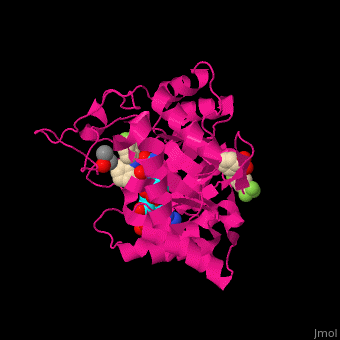Prostaglandin F synthase
FunctionProstaglandin F synthase or aldo-keto reductase 1C3 (AKR1C3) catalyzes the conversion of aldehydes and ketones to alcohol using NADH or NADP as cofactor. It catalyzes the isomerization of prostaglandin H2 (PGH2) to prostaglandin F2α (PGF2α) and the formation of 11β-PGF2α from prostaglandin D2 (PGD2)[1]. AKR1C3 also catalyzes the NADPH reduction of progesterone, estrone and androstene-dione. RelevanceSince PGH2 is a potent vasoconstrictor, PGF2α is used to treat impotence and abortion. PGD2 is critical in the development of allergic diseases like asthma, hence inhibitors of AKR1C3 – mainly non-steroidal anti-inflammatory compounds (NSAID) like flufenamic acid, mefenamic acid, indomethacin, naproxen, ibuprofen are used as drugs. Structural highlightsHuman AKR1C3 [2]. Water molecules are shown as red spheres. 3D structures of prostaglandin F synthaseprostaglandin F synthase 3D structures References
|
| ||||||||||
